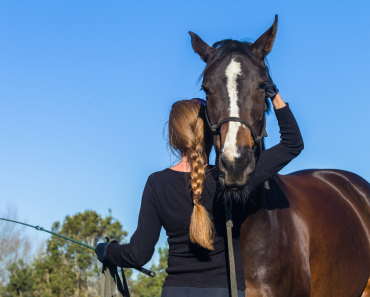There are several distinct ways to educate a horse these days. When it comes to equitation science, there appear to be at least two distinct training methods used and researched.
The first way of horsemanship is the ‘natural’ approach, which allows the horse to assess action and reaction. This is sometimes said to be the “new” way, but it appears to be based on time-tested techniques. Horsemanship that relies on desensitization or ‘overriding’ the animal is the other pole.
Scientific Research
The authors of the paper Baragli et al. (2012, in press) published an essay comparing two diverse training techniques for young horses, with a scientific approach to analyze the effectiveness of these approaches by monitoring the horses’ activities.
Twelve young horses were divided into two teams. Both were taught using the same type of learning concept, but they gave the horses varied ways to influence their surroundings.
In a Paddock (Group A)
The horses in Group A were trained in a tiny circular corral. The horse was not restrained or driven away until it showed interest in the trainer, and training proceeded without interruption. When approaching the horse, the trainer paid attention to its behaviour. The horse was permitted to withdraw; if it did so, the same approach was taken to try again.
When the horse voluntarily followed the trainer, bodily contact was begun. The last stage was to saddle up the horse. While this was occurring, the horse had plenty of time to evaluate each stimulus while it retreated and all actions were taken at a slow pace, allowing the animal time to think about each experience.
Barn or Stable (Group B)
In Group B, the training started in the stable where the horse was kept alone, isolated from the group. The horse was forced into a corner and restrained with a halter. Physical contact and mounting of the horse were maintained until it was accepted, giving it no opportunity to assess the stimuli.
A Behavioural Approach to Assessing Training Success
Following training, two tests were conducted to assess the behaviour of each horse. The Observer XT was used for behavioural monitoring and evaluation. In addition, the subjects’ heart rates were tracked.
In the person test, a horse was set free in its own familiar environment. An unfamiliar individual was introduced and the horse’s attention and exploration were observed.
In the grooming test, a known person (the trainer) groomed and saddled the horse in his or her usual training area (round pen or stall).
Behaviours scored included:
- Exploration of the person
- Attention paid to the person
- Head lowered
- Kinetic behaviours
- Defensive behaviours
- Avoidance behaviours
According to the researchers, Group A required more time to train but displayed greater indications of relaxation during both tests. During both tests, their heart rates were lower and they came closer to the strange human as opposed to horses from Group B, where only one horse went up to the strange human.
Horses were also observed to be more social with that individual. They spent significantly more time in their company as well. In the hoof-licking experiment, group A’s horses had an easier time lifting their hooves. The overall grooming routine took the same amount of time in both groups.
Differences Between Horse Training Styles
Both tests produced some surprising and intriguing findings. In both tests, group A exhibited a lot of exploratory behaviour that can be linked to a good emotional state. They also observed an inclination of the head when grooming, which is evidence of relaxation. Group B paid attention to people, but they also engaged in more defensive and avoidance behaviour rather than exploration.
The main distinction between these two techniques is that the time it takes to analyze a stimulus in group A was determined by the horse, with trainers taking into account attentive conduct and distinctive responses in their actions. To put it another way, the trainer’s behaviour was controlled by the horse’s response.
More Research
This essay provides straightforward answers. It’s a fantastic beginning for further study on horse training methods and the well-being of horses, as well as a solid foundation for additional research.
There are a variety of training techniques available, and many will include elements of both the methods described in Baragli et al.’s book. However, the distinct difference in approach mentioned here provides insight into the consequences of horse behaviour and the importance of performing a thorough behavioural study when comparing various techniques.

